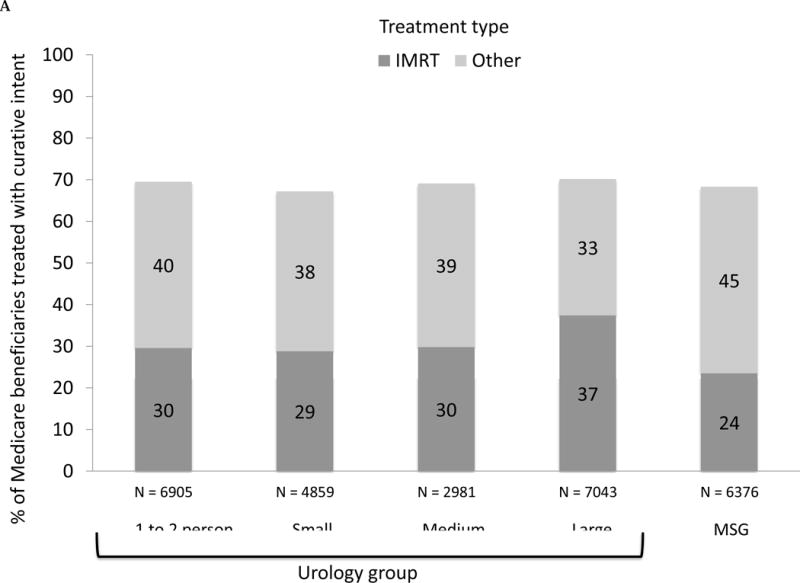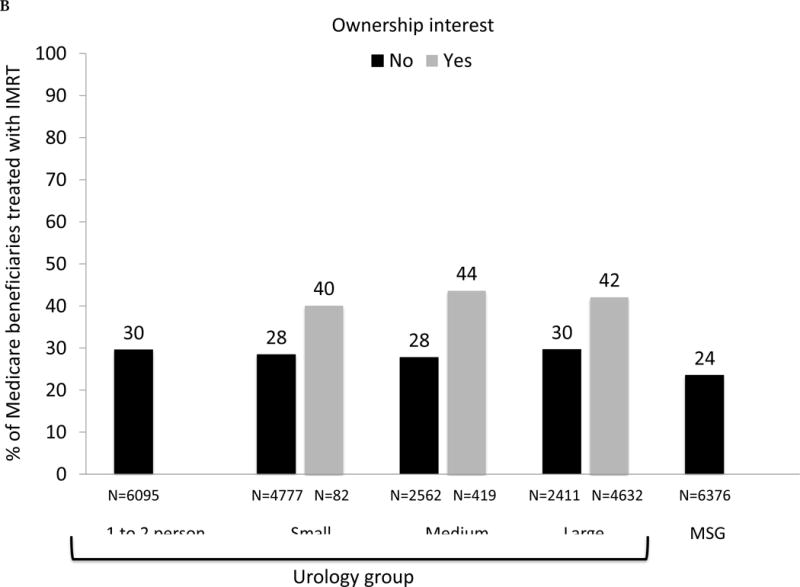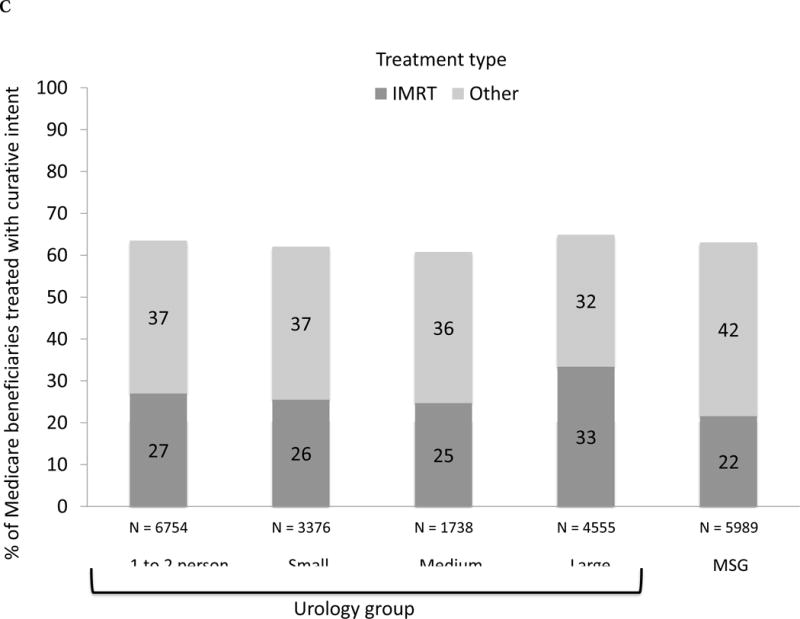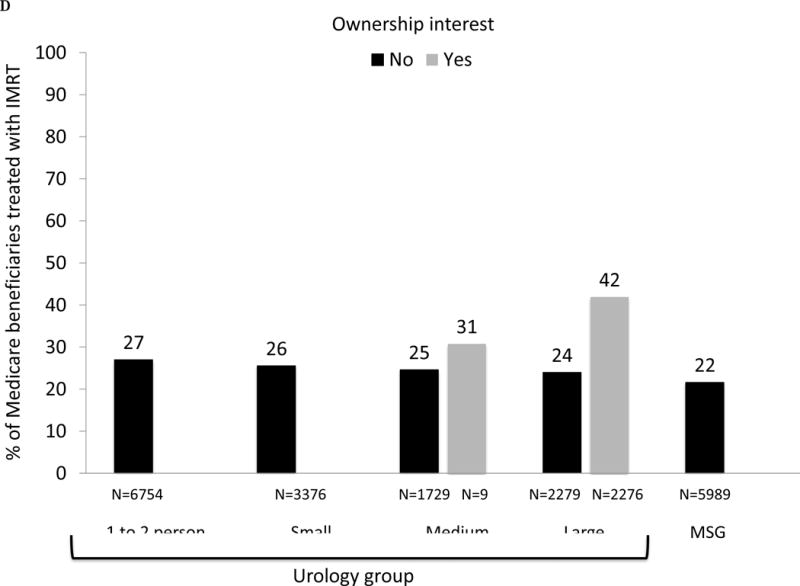Fig. 1.




(A) Adjusted percent of Medicare beneficiaries with newly diagnosed prostate cancer in 2010–2012 (n = 28 164) treated with curative intent within 1 yr of diagnosis, presented as stacked bars. Dark gray bars represent treatment with intensity-modulated radiation therapy (IMRT). Light gray bars represent other treatments, including external beam radiation therapy other than IMRT, brachytherapy, cryotherapy, and surgery. Results presented are stratified by type of urology practice: urology group practice (further divided by size of group) or multispecialty group (MSG). Comparing IMRT use across the practice types, p <0.001. Comparing overall curative treatment (IMRT plus other) across the practice types, p =0.004. (B) Adjusted percent of Medicare beneficiaries with newly diagnosed prostate cancer in 2010–2012 (n = 28 164) treated with IMRT within 1 yr of diagnosis, stratified by IMRT ownership status of urology practice (gray bars represent owners, black bars represent nonowners) and practice type: urology group practice (further divided by size of group) or MSG group. There were no multispecialty groups or urology groups with one to two urologists that had IMRT ownership. For differences in IMRT use comparing owners with nonowners, p =0.18 for small urology groups, p =0.004 for medium urology groups, and p <0.001 for large urology groups. (C) Adjusted percent of beneficiaries in Surveillance, Epidemiology, and End Results-Medicare data with newly diagnosed prostate cancer in 2010–2011 (n = 22 412) treated with curative intent within 1 yr of diagnosis, presented as stacked bars. Dark gray bars represent treatment with IMRT. Light gray bars represent other treatments, including external beam radiation therapy other than IMRT, brachytherapy, cryotherapy, and surgery. Results presented are stratified by type of urology practice: urology group practice (further divided by size of group) or MSG. Comparing IMRT use across the practice types, p =0.033. Comparing overall curative treatment (IMRT plus other) across the practice types, p =0.08. (D) Adjusted percent of beneficiaries in Surveillance, Epidemiology, and End Results-Medicare data with newly diagnosed prostate cancer in 2010–2011 (n = 22 412) treated with IMRT within 1 yr of diagnosis, stratified by IMRT ownership status of urology practice (gray bars represent owners, black bars represent nonowners) and practice type: urology group practice (further divided by size of group) or MSG group. There were no multispecialty groups, urology groups with one to two urologists, or small urology groups that had IMRT ownership. For differences in IMRT use comparing owners to nonowners, p =0.66 for medium urology groups, and p <0.001 for large urology groups.
